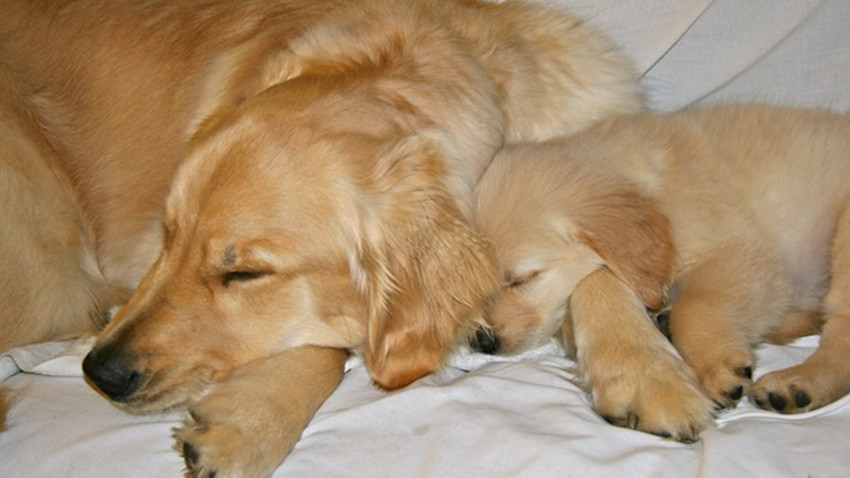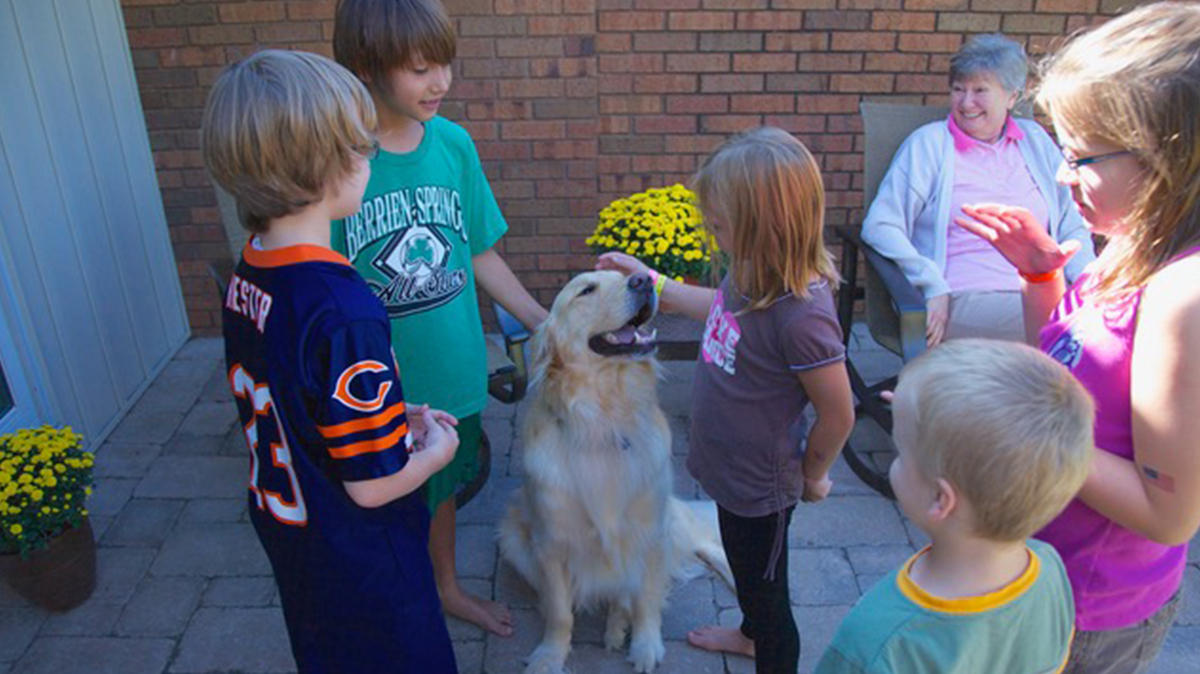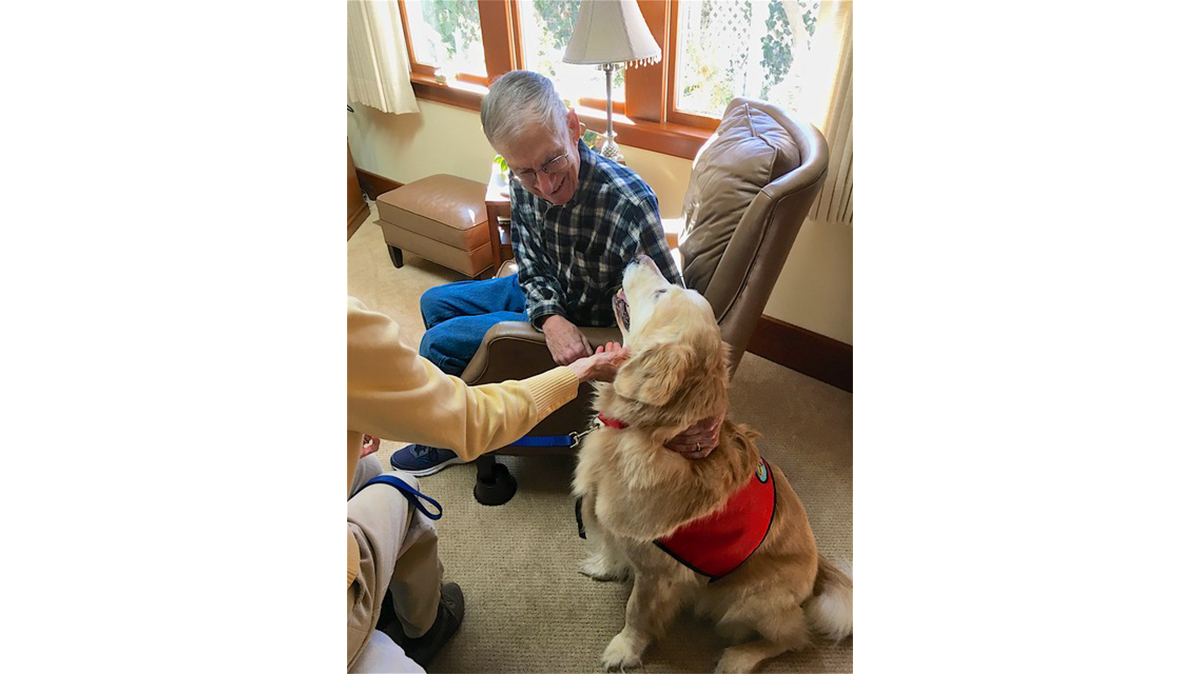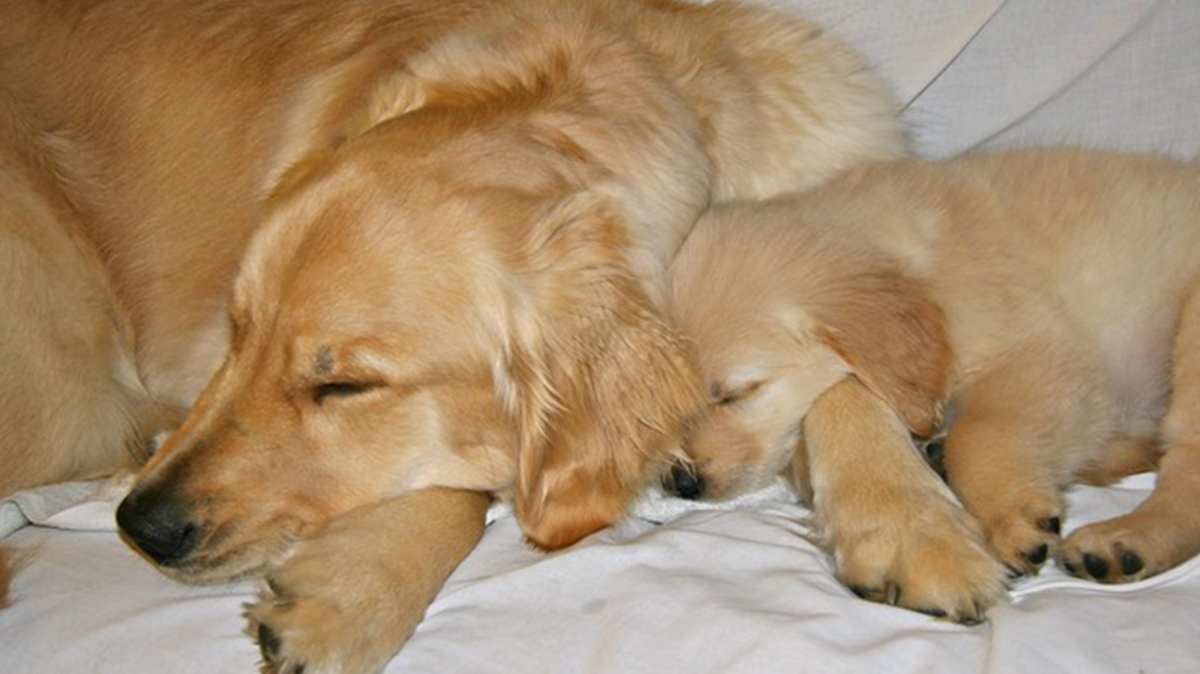
"Man’s Best Friend"
The reason the well-known phrase, “man’s best friend,” is enclosed in quotation marks is because (1) it is an oft-quoted phrase in reference to dogs, but (2) it is also regularly challenged! I want to thank all who submitted animal stories prior to our worship series, “For the Love of an Animal.” Those stories are evidence enough that “man’s best friend” could just as well be a cat, a peacock or two or three, or whatever animal companion you happened to grow up with or are enjoying right now.
And yet dogs continue to hold a special place in the human heart. I remember looking down from our hotel balcony in Belgrade, Serbia, and counting the number of people walking their dogs in the nearby city park—ditto, by the way, in Xiamen, China, every early morning. Dogs are beloved—let’s face it. That’s why I’m a bit hesitant to point out that we will not be having a dog story in this short mini-series. Why? Because in the time of the Bible writers dogs were not domesticated animals—they were wild, feral beasts nobody wanted around. Two exceptions are the “sheepdogs” that Job noted (Job 30:1 NIV) and the “little dogs” Jesus and the Syro-Phonecian mother described as eating crumbs spilled from the master’s table (Matthew 15:26-27).
But look up the word “dog” in your favorite concordance, and you’ll discover the very word is an epithet, “a term of insult when applied to human beings . . . or a term used to indicate extreme self-abasement.” In fact “opponents of the gospel are compared to dogs,” as are immoral sinners outside the New Jerusalem ([Revelation 22:15] see SDABC Bible Dictionary 277).
But happily, three Pioneer members—Kathy Koudele and Bruce and Jan Wrenn, clearly dog-lovers to the core—took the time to extol their beloved canine companions, and even included photographs.
Kathy wrote up a short piece about “Jack, the Guardian Angel in Dog Fur,” to tell about the part-Husky part-German Shepherd stray that wandered into their farmyard one day in Central Michigan. Would this stranger be a threat to the sheep on the farm? Turns out he was just the opposite! She writes, “Thankfully, Jack showed no interest at all in sheep; he was much more interested in retrieving and chewing on corn cobs. We used his love of cobs to trick him into acting like a Border Collie and thereby accidentally herding the sheep. We’d throw a corn cob toward the back of one side of the flock and he’d run after it causing the sheep to move forward away from him. Then we’d throw another cob toward the back of the other side and the same thing would happen. The process was repeated several times and in that way, the flock would continue to move forward.”
But how would he be with their children? Kathy continues, “Some dogs don’t see babies and toddlers as fully human and can treat them like unruly puppies. When our children arrived, however, Jack recognized them as fully human and treated them with the same respect and enthusiasm he did us. When they would be sitting in their little bouncy seat while I was milking cows or feeding lambs, he would bring over a corn cob he favored and put it in the little tray. They would wave it around and then drop it. He would quickly pick it up and set it back in the tray so they could drop it again for him. Sometimes they would use the cob as a teething ring before their parents had a chance to retrieve it.” Too bad they couldn’t market that idea!

And as for strangers “within your gates” (Exodus 20:10), Jack was there to guard: “His intense husky eyes and upright ears combined with the German Shepard body coloring were enough to persuade folks to stay in their car and call out to us or honk the horn. While my husband was away at medical school during the week, I knew I could rest easy both day and night since Jack was on patrol. I knew no unsavory sorts would be able to get past him and possibly harm our children or me. He was my guardian angel in dog fur, and I thanked God daily for bringing this perfect dog into our lives.”
Bruce and Jan write: “We have had 7 Golden Retrievers over our time in Berrien Springs. . . . Cooper was beloved by all who knew him—from the very young to the very old. Taking him for a walk around the neighborhood was like walking with the Pied Piper. The kids would come running out yelling 'Cooper!!’ And he would sit down so the smallest chidden could hug his neck. Some of the kids would come ring our doorbell and ask if they could come in the backyard to play with him.”

How was Cooper with senior citizens? Bruce wrote: “At the other end of the age spectrum, Cooper was a trained therapy dog, certified to be able to go into nursing homes, and other care places like hospice facilities, to greet older people who wanted to pet dogs and tell us about their own dogs, long since past. Cooper loved doing this, just loved it. He would get so excited when we brought out his service dog vest.”

Reflecting on the softer side of companion dogs, Bruce observes: “Books have been written about how animals have shown remarkable, sacrificial love for one another and for humans. Two that come to mind are Stephanie Laland’s Animal Angels and Peaceable Kingdom. What I take away from all this is just as God places in our heart the need to love and be loved, and to recognize the God of Love’s presence in our life, He also places the capacity for love in many of his creatures. We all have witnessed this in our own lives. Just another peek into God’s marvelous and amazing character and why we are reminded by John that ‘God is Love.’”

There it is. “For the Love of an Animal.” Right here at home.
So why wouldn’t the Creator of us all—humans and “man’s best friend" and everything “else in all creation” (Romans 8:39)—embed reflections of His own heart of devoted love in all of us? For who more than He deserves the title, “The Best Friend of All?"